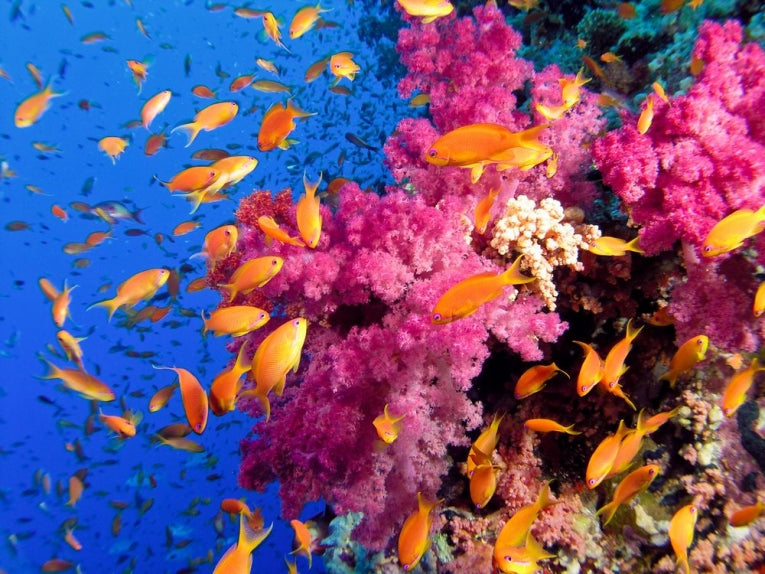Those pretty fish and panoramic colours of soft and hard coral that we see on one of those rare undisturbed reefs are down to a complex ecology similar to tropical forest ecosystems. But the predators and consumers, the producer algae and the tiny invertebrates mean nothing compared to the microorganisms that run the whole show. Catalina Reyes of CoECRS. (Centre of Excellence for Coral Reef Studies) and the University of Queensland has published her work alongside 4 colleagues, on the bacteria, fungi and algae that live in this most complex marine ecosystem.
The shift in this ecosystem recently has been due to our overproduction. The CO2 we made over the last century or two has made the sea into a kind of cola. That acid has effects that Catalina's research clearly identifies in the micro-world of corals. She links it all up, "So fish, turtles, sharks, lobsters and other reef organisms may lose their homes, threatening coral reef biodiversity and the livelihoods of tens of millions of people." Calcium carbonate is the basis of all reefs, for molluscs and others, as well as the hard corals. Erosion of the reef by many different agents is normal, but nowadays it seems excessive, destroying the reefs worldwide at a really alarming rate.
The fine balance of attrition, storm damage, predation and growth has been changed. Instead of slow growth, deterioration is now the norm. Less carbonate is available because the acid removes it, just as it does in your school laboratory. Micro-boring organisms also remove the coral skeleton as usual, so you end up with no reef!
Computer simulation by the researchers compared current increases in carbon dioxide levels and their effects on reefs with those lesser increases which we hope to achieve by cutting emissions. Catalina found a 35% rate of erosion in the second example.
The horrific effect of "doing nothing about emissions" was a doubling of the erosion (= 100%.) Micro-boring organisms became much more active in acidic conditions, so it seemed likely that higher temperatures and pH (acidity) caused their increased activity to destroy more coral. Most common of all was a tiny alga, photosynthesising even in the low light conditions as it penetrated deep into the corals' hearts.
Global Change Biology publish this paper, "Ocean acidification and warming scenarios increase microbioerosion of coral skeletons," by Catalina Reyes-Nivia, Guillermo Diaz-Pulido, David Kline, Ove-Hoegh-Guldbeg and Sophie Dove.
href="https://earthtimes.org/environment/coral/index.html">Coral Reefs









